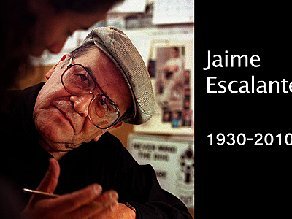The Leaning Tower of Pisa or simply the Tower of Pisa is the campanile, or freestanding bell tower, of the cathedral of the Italian city of Pisa, known worldwide for its nearly four-degree lean, the result of an unstable foundation. The tower is situated behind the Pisa Cathedral and is the third-oldest structure in the city's Cathedral Square (Piazza del Duomo), after the cathedral and the Pisa Baptistry.
The height of the tower is 183.27 feet from the ground on the low side and 185.93 feet on the high side. The width of the walls at the base is 8 ft 0.06 in. Its weight is estimated at 16,000 short tons. The tower has 296 or 294 steps; the seventh floor has two fewer steps on the north-facing staircase.
The tower began to lean during construction in the 12th century, due to soft ground which could not properly support the structure's weight, and it worsened through the completion of construction in the 14th century. By 1990, the tilt had reached 51⁄2 degrees. The structure was stabilized by remedial work between 1993 and 2001, which reduced the tilt to 3.97 degrees.
The tower was closed to the public on 7 January 1990, after more than two decades of stabilisation studies and spurred by the abrupt collapse of the Civic Tower of Pavia in 1989. The bells were removed to relieve some weight, and cables were cinched around the third level and anchored several hundred meters away. Apartments and houses in the path of a potential fall of the tower were vacated for safety. The selected method for preventing the collapse of the tower was to slightly reduce its tilt to a safer angle by soil removal 1,342 cubic feet from underneath the raised end. The tower's tilt was reduced by 17.7 inches, returning to its 1838 position. After a decade of corrective reconstruction and stabilization efforts, the tower was reopened to the public on 15 December 2001, and was declared stable for at least another 300 years. In total, 77 short tons of soil were removed.
After a phase (1990–2001) of structural strengthening, the tower has been undergoing gradual surface restoration to repair visible damage, mostly corrosion and blackening. These are particularly pronounced due to the tower's age and its exposure to wind and rain. In May 2008, engineers announced that the tower had been stabilized such that it had stopped moving for the first time in its history. They stated that it would be stable for at least 200 years.
If you're a fan of big taste, then you're gonna go wild over our Southwestern Chicken Packets! We cook our chicken inside tin foil to lock in the flavors of the spices and get that ooey-gooey cheese melted just right. Plus, it makes cleaning-up easy!
- 4 boneless, skinless, chicken breast halves (about 1-1/2 pounds)
- 1/2 teaspoon salt
- 1/4 teaspoon black pepper
- 1/4 cup thinly sliced sun-dried tomatoes in oil, not drained
- 1/2 cup diced green chilies, drained
- 1 cup frozen corn, thawed
- 1/2 teaspoon cumin
- 1/2 teaspoon chili powder
- 1/2 cup shredded Mexican cheese blend, divided
- Preheat grill to medium-high. Cut 4 (12-inch) squares of aluminum foil.
- Evenly sprinkle chicken with salt and pepper and place each piece in center of a foil square. Evenly spoon sun-dried tomatoes, chilies, and corn over each chicken breast. Sprinkle cumin and chili powder evenly over vegetables. Wrap foil securely, leaving room for steam to circulate, and seal edges tightly.
- Place packets on grill, close grill cover, and cook 8 to 10 minutes, or until chicken is no longer pink in center.
- Open packets carefully, as steam may be released. Sprinkle with cheese and continue to cook 1 to 2 minutes, or until cheese is melted.
***Make 'em in the oven! - Bake chicken packets at 350 º for 15 -20 minutes or until chicken is no longer pink in center.
1943 – Sir Ben Kingsley, English actor
1965 – Nicholas Sparks, American author
HOW TO OBSERVE
- Host a party to ring in the New Year
- Set some achievable goals
- If you can’t be at a celebration, watch one live on television
- Have a game night with your family and see who lasts until midnight
- Go for a midnight run
- Attend a concert that goes past midnight
- Go ice-skating at a nearby park or indoor rink
- Kiss your spouse or significant other at midnight
- Enjoy a quiet evening at home journaling
- Think about what you can do to make next year the best one of your life
NEW YEAR’S EVE HISTORY
National Champagne Day recognizes the wine that puts the pop in every New Year’s Eve celebration.
Genuine champagne only comes from France’s Champagne region. French law protects where and how it is made. With some exceptions, only Champagne made according to set specifications and within the French region may label their wines using the term “Champagne.” Other foods and beverages fall under this type of protection in France and other parts of the world.
Champagne, France, is located northeast of Paris and provides ideal temperature and soil to produce the grapes required for Champagne. French law allows only eight varieties of grapes for the production of Champagne in the Champagne region. Primarily, the three grapes used to create Champagne are Chardonnay, Pinot Noir, and Pinot Meunier.
Unlike other wines, Champagne ferments in the bottle allowing the vintner to trap the CO2 in the bottle. The bubbles give Champagne its effervescence.
While Champagne can be spendy, if you are looking for a little pop on New Year’s Eve, other varieties of sparkling wine are available from Italy, California, and even the South of France. They offer a sparkle that won’t put a fizzle in your pocketbook. Then again, some New Years mean an opportunity for splurging and celebrating no matter the expense.



































